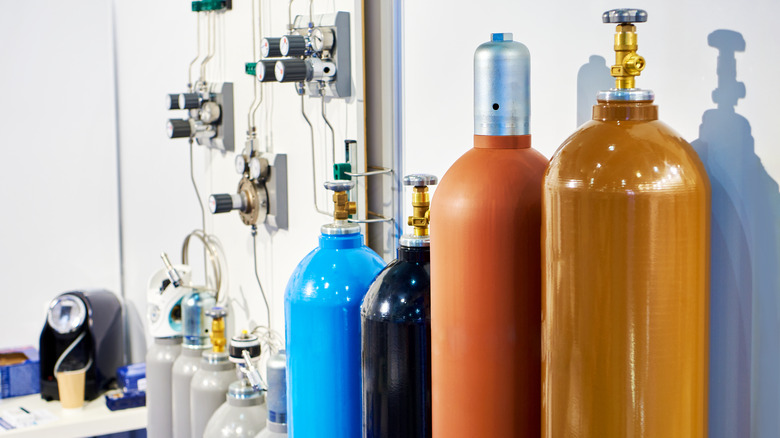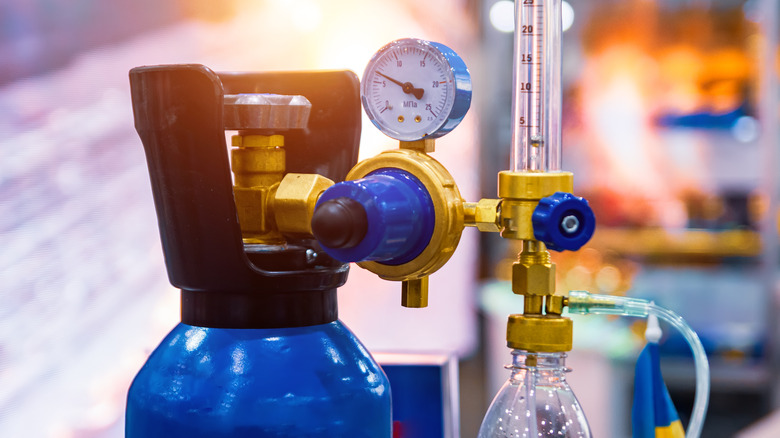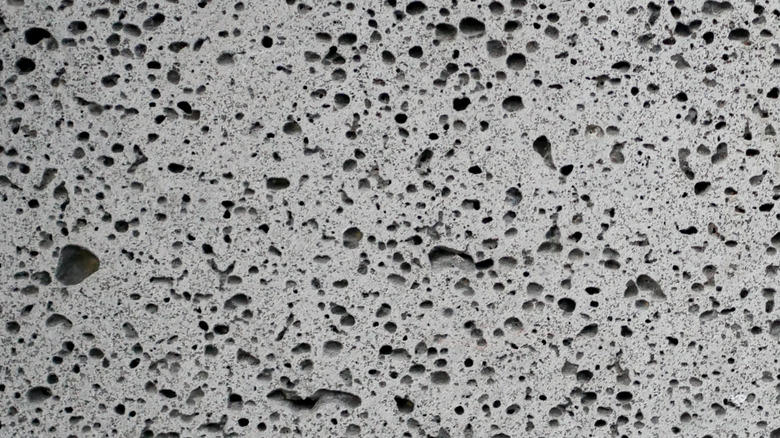What Oxygen Farming On The Moon Would Look Like
Humans have dreamt about living on the moon for a long, long time — even after excursions to the Earth's one and only natural satellite were put on hiatus for decades. While we know reaching the big floating chunk isn't out of the question, one of the biggest problems facing any type of settlement has been oxygen. Specifically a consistent, reliable supply of life-sustaining air that wouldn't rely on complex (and very expensive) rocket-powered delivery missions.
There's still hope, however. The European Space Agency (ESA) previously held a competition in which participants would design a device that could analyze and extract oxygen from lunar regolith (essentially "moon dust"). Now the winning team, which includes people from Thales Alenia Space, AVS, Metalysis, The Open University, and Redwire Space Europe, has to turn its design into a reality.
The catch is that it has to survive a gravity-defying trip outside of Earth's atmosphere, and then perform a whole lot of extremely accurate processes in a limited amount of time.
How would oxygen farming on the moon work?
Initial oxygen harvesting devices will be more of a proof-of-concept than finished refineries, but if the process is deemed sound the plan is to expand the scope significantly, according to the ESA. Starting out though, the device will need to be solar powered, be able to gather samples, precisely measure gas concentrations in those samples, extract 70-percent of the oxygen from said samples, and do it all within the span of one lunar day (roughly 10 Earth days) before the sun goes down and it loses its power source.
Oh, and it has to be very energy efficient, compact, and able to fit in all sorts of lunar lander models, so that it can be dropped off in the necessary locations.
Once in place, the devices will get to work extracting oxygen from the minerals contained in bits from the moon's surface. A field of harvestable oxygen would also be theoretically sustainable, since oxygen ends up in these lunar materials thanks to the UV rays in direct sunlight oxidizing the soil (or what counts as soil). So long as one of these fields gets regular sunlight, oxygen extraction should be able to keep going somewhat indefinitely.
Why is any of this necessary?
Clearly it's important for space travelers to be able to breathe, and having a source readily available in the environment they're inhabiting would help immensely. There would be no need to pack a bunch of extra air on the way up, and no need to send a bunch of empty tanks down to Earth or full tanks back up.
Beyond the obvious benefits, extracting oxygen from lunar minerals will also result in what the ESA refers to as "usable metals," which could then be used in the creation of other important supplies. It doesn't specify what exactly those metals could be used to construct, but does say that it would be plausible for astronauts stationed on the moon to be able to survive there without reliance on external supply lines that could be interrupted, delayed, or lost.
Another benefit to the technology is that the process of trying to find usable sources of refinable oxygen could also be used to source reactive oxygen species (ROS), which can actually be very dangerous. ROS can and have caused burns or even cancer, and the chemicals aren't just limited to other celestial bodies. Being able to detect concentrations of ROS here on Earth has the potential to avoid some pretty serious hazards.


